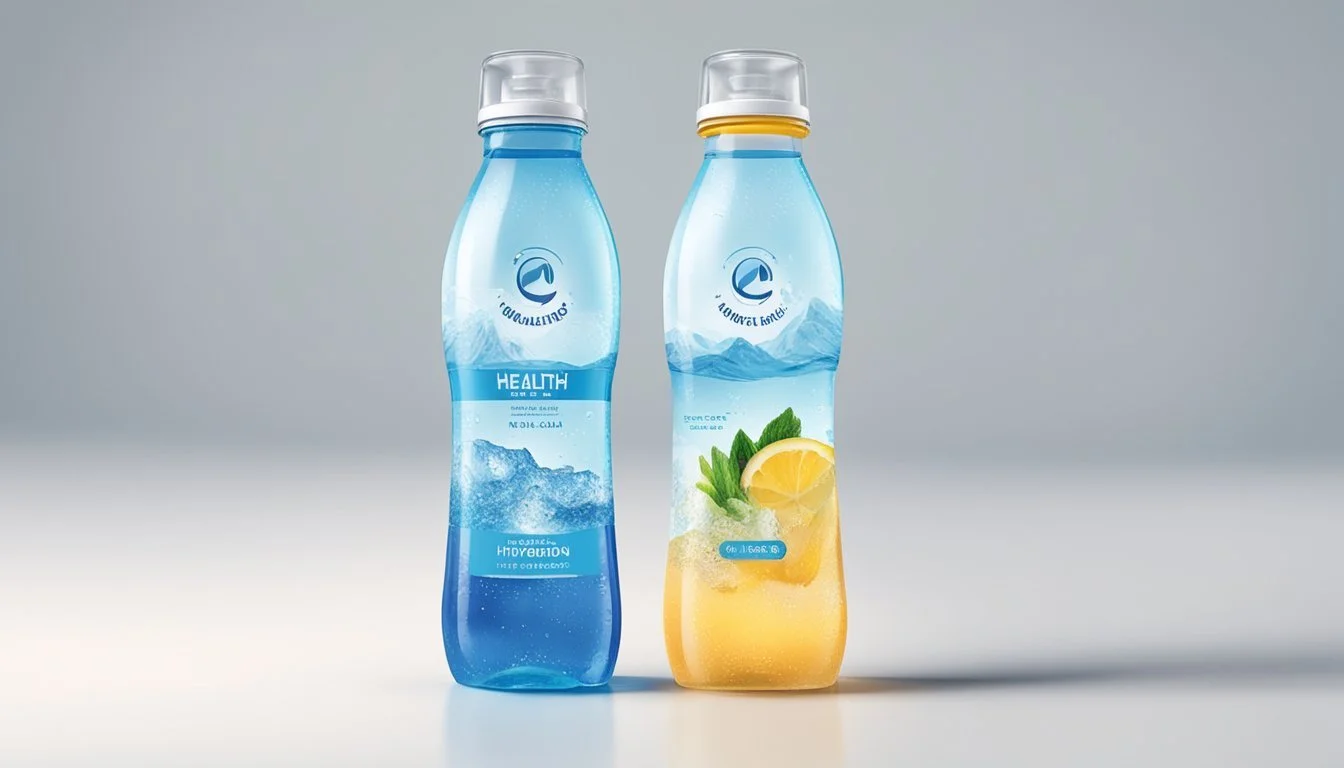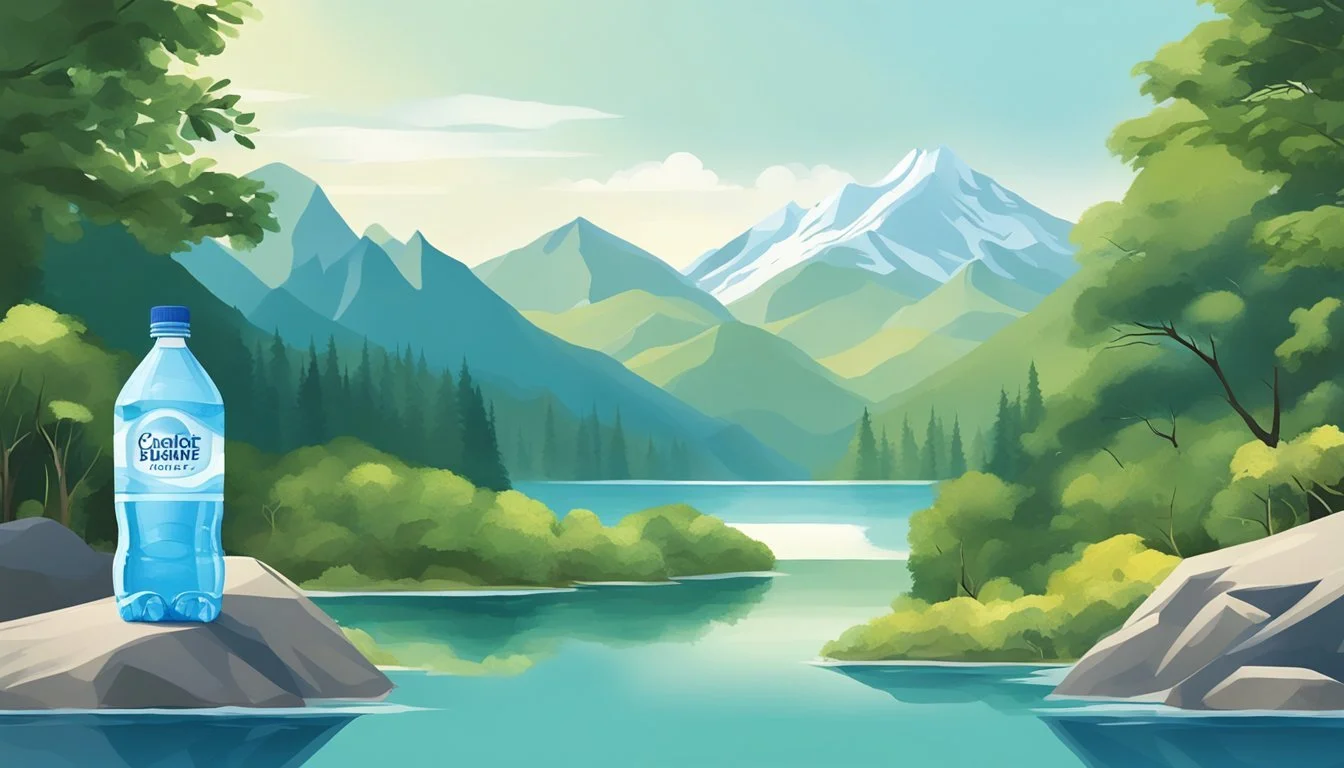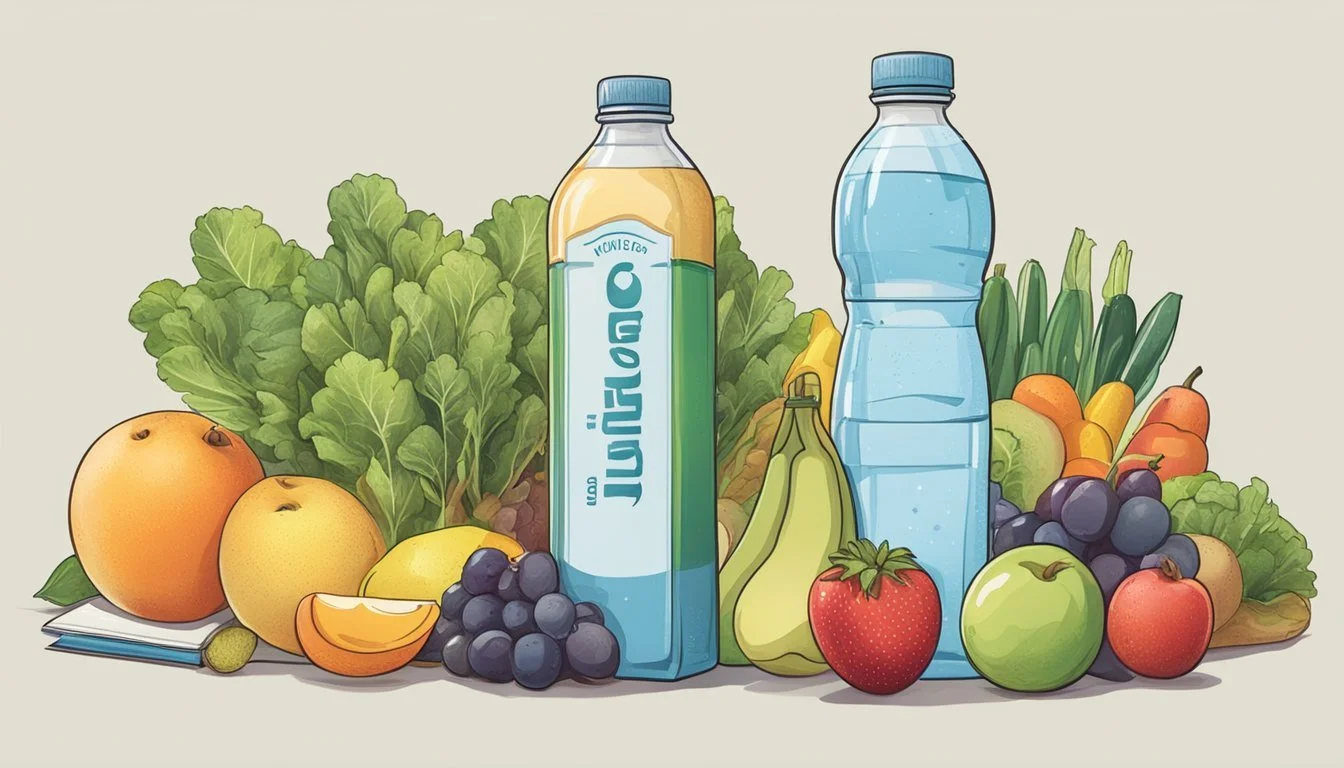Cirro vs. Big Chill
Comparing Quality and Taste
When it comes to choosing between Cirro and Big Chill bottled water, consumers often find themselves wondering which brand offers superior quality. Cirro, known for its crisp and refreshing taste, prides itself on a meticulous purification process. This ensures a pure drinking experience with every bottle, resonating well with health-conscious consumers.
Big Chill, on the other hand, has carved out a reputation for providing high-quality water that balances affordability with taste. It's often praised for its clean, mineral-rich profile, sourced from natural springs. For those who prioritize a mineral-rich taste, Big Chill may be the better option.
By comparing Cirro and Big Chill on factors such as taste, source, and purification techniques, this article will help you determine which bottled water brand suits your preferences. Make an informed choice by understanding the distinct characteristics each brand brings to the table.
Understanding Bottled Water
Bottled water has a fascinating history and comes in various types that cater to different preferences and needs. Its regulation ensures safety, and its comparison to tap water reveals notable differences.
History and Evolution of Bottled Water
Bottled water traces back to early civilizations where people collected and stored water in containers made from clay or animal skins. Throughout the 19th century, bottled water gained popularity in Europe and North America as a health tonic, often sourced from natural springs.
In the 1970s, the bottled water industry saw tremendous growth with advancements in plastic packaging. The convenience of plastic bottles made water more accessible, contributing to its widespread popularity. Today, bottled water is a multibillion-dollar industry, catering to diverse consumer needs.
Types of Bottled Water
Bottled water is classified based on its source and treatment methods. Spring water comes from underground sources and flows naturally to the surface, retaining its mineral content. Mineral water contains naturally occurring minerals and must have a consistent composition of minerals from its source.
Purified water is sourced from any water and undergoes processes like distillation or reverse osmosis to remove contaminants. Sparkling water contains carbon dioxide for effervescence. Flavored water includes added flavors, sometimes with sweeteners, to enhance taste. These variations provide consumers with a wide array of choices to suit their preferences.
Bottled Water Regulations
Bottled water in the United States is regulated by the Food and Drug Administration (FDA). The FDA's regulations cover labeling, quality standards, and processing practices. By contrast, the Environmental Protection Agency (EPA) oversees the Safe Drinking Water Act, ensuring the safety of municipal tap water.
The FDA mandates specific labeling, such as the source and treatment methods. Bottled water must meet stringent safety standards to prevent contamination. These regulations reassure consumers about the quality and safety of bottled water, making it a reliable choice for many.
Bottled Water vs. Tap Water
Bottled water and tap water have distinct differences in cost, environmental impact, and perceived quality. Tap water is significantly cheaper, with one gallon costing roughly $0.005 in the United States. In contrast, bottled water can cost around $9.47 per gallon when purchased in single-serving bottles.
Environmental concerns arise from plastic waste, as bottled water contributes to significant plastic pollution. Tap water is considered environmentally friendlier. Additionally, tap water often contains added chlorine and fluoride, which some find unappealing. However, both bottled and tap water are generally safe to drink, regulated by their respective agencies to ensure quality.
Analyzing Cirro and Big Chill
Cirro and Big Chill offer unique benefits, including distinct water sources and varying levels of mineral content, while differing in company background and product offerings.
Company Profiles
Cirro is an emerging player in the bottled water market. Known for its focus on purity and sustainability, Cirro sources its water from natural springs. The company emphasizes eco-friendly practices, including using biodegradable bottles.
Big Chill has been a trusted name in bottled water for several decades. It sources its water from deep underground aquifers. The company has a broad distribution network and emphasizes quality control, ensuring that every bottle meets stringent safety standards.
Product Offerings
Cirro positions itself as a premium brand with a limited but high-quality product range. Its main offerings include natural spring water and enhanced mineral water. The focus is on maintaining the water’s natural purity, with minimal processing.
Big Chill offers a wider variety of products. In addition to still water, it also markets sparkling water and flavored options. The brand caters to a broader consumer base with both budget-friendly and premium products, making it versatile and accessible.
Water Source and Quality
Cirro sources its water from pristine natural springs. The water is tested for contaminants and boasts a balanced mineral content, including essential electrolytes. Its commitment to quality is evident in its rigorous filtration processes, which preserve the water’s natural taste and purity.
Big Chill’s water comes from deep underground aquifers, known for their high mineral content. The aquifers provide naturally filtered water, reducing the need for extensive processing. Big Chill ensures high quality by testing for contaminants like PFAS and bacteria, ensuring that the end product is safe and clean for consumption.
Health and Hydration
Choosing between Cirro and Big Chill involves understanding their benefits concerning hydration and overall health. Both brands focus on providing safe drinking water enriched with various minerals and electrolytes.
Hydration and Its Importance
Proper hydration is critical for maintaining bodily functions. Water assists with digestion, circulation, and regulation of body temperature. Cirro and Big Chill both claim to offer high hydration levels. Notably, Cirro’s pH-balanced water helps the body stay hydrated for longer periods, enhancing daily performance and immune system function.
Using either brand can help prevent dehydration, which can lead to fatigue, headaches, and impaired cognitive function. These bottled waters aim to keep the body optimally hydrated, promoting overall health and well-being.
Minerals and Electrolytes
Minerals and electrolytes are crucial for hydration and health. Big Chill contains a rich blend of calcium, magnesium, and potassium, which support muscle function and cardiovascular health. The presence of these electrolytes ensures quick rehydration, especially after physical activities.
In contrast, Cirro focuses on providing essential minerals such as sodium and magnesium. These help maintain fluid balance and assist with energy production. Both brands position their mineral content as a key selling point, making their water an excellent choice for those seeking to enhance their health and hydration through their drinking water.
Taste and Purity
In exploring the qualities of Cirro and Big Chill bottled water, evaluating the taste and understanding the purification processes are important. Both brands offer distinct experiences that can appeal to different preferences.
Taste Profiling
Cirro water is often described as clean and crisp. It has a neutral flavor profile that doesn't distract the palate. Blind taste tests typically reveal that Cirro ranks highly due to its refreshing and pure taste, which makes it ideal for both casual drinking and pairing with food.
Big Chill, on the other hand, offers a slightly richer flavor. Water sommeliers note that it has a faint mineral finish, providing a fuller-bodied experience. For those who enjoy a bit more character in their water, Big Chill can be a preferable choice. Both waters avoid any plastic or chemical aftertaste, preserving their natural flavors.
Purity and Filtering Processes
Cirro uses reverse osmosis and carbon filters to ensure its purity. This method effectively removes impurities while maintaining essential minerals. The rigorous filtering process ensures that the water is free from contaminants, providing a clean and safe drinking experience.
Big Chill employs advanced distillation techniques, followed by carbon filtering. This dual approach eradicates almost all impurities, making it one of the purest bottled waters on the market. The result is a smooth and pure water, achieved through meticulous purification standards.
Both brands emphasize high-quality filtration methods, prioritizing consumer health and safety. They ensure that their water remains free of contaminants, delivering a fresh and safe product.
Environmental Considerations
When comparing Cirro and Big Chill, it's crucial to assess their environmental impacts. This involves exploring the use of plastic in bottled water, the environmental impact of production, and sustainable practices, as well as considering alternatives.
Bottled Water and Plastic Use
The production and disposal of plastic bottles significantly affect the environment. Most bottled water, including Cirro and Big Chill, use PET (polyethylene terephthalate) plastic. PET bottles can leach chemicals like BPA into the water and contribute to microplastics in oceans.
Plastic bottles also contribute to landfills, as many are not recycled. The average time for a plastic bottle to decompose in a landfill can be hundreds of years, further straining the environment.
Environmental Impact of Production
The manufacturing process of bottled water has a notable environmental footprint. Producing the bottles requires large amounts of oil and water, leading to increased carbon emissions. Transportation of bottled water also contributes to the carbon footprint due to the fossil fuels burned in the process.
Additionally, water extraction for bottling can deplete local water sources, impacting the environment and communities. This extraction can aggravate natural disasters, such as droughts, by overusing natural water reserves.
Sustainable Practices and Alternatives
Adopting sustainable practices, such as using reusable bottles, can mitigate some of the environmental impacts. Reusable bottles made from materials like glass or stainless steel are more environmentally friendly compared to single-use plastic bottles. Companies like Big Chill and Cirro can also consider using more sustainable practices in production, like reducing their carbon footprint and using recyclable materials.
Consumers can choose tap water with a reusable bottle to reduce environmental harm. Opting for environmentally friendly options helps lessen the demand for single-use bottles and supports more sustainable consumption habits.
Cost and Accessibility
This section evaluates the costs associated with Cirro and Big Chill bottled waters and explores their availability and convenience.
Pricing Comparison
Cirro bottled water is generally considered more expensive. A typical 16.9 oz bottle can cost around $1.50 to $2.00, which is on the higher end for bottled water.
Big Chill, on the other hand, is known for being more budget-friendly. Prices for a similar 16.9 oz bottle typically range from $0.99 to $1.25, making it an inexpensive choice compared to Cirro.
When purchasing cases, Cirro can cost around $20 to $30 for a 24-pack, while Big Chill cases are often priced between $10 to $15. The price difference is significant, especially for bulk purchases.
Availability and Convenience
Cirro water is primarily available in upscale grocery stores, specialty stores, and online platforms. Finding it in regular grocery stores may be less common, making it a bit less accessible for everyday shoppers.
Big Chill, meanwhile, is widely available across numerous retail outlets, including most grocery stores, convenience stores, and even discount stores. This wide distribution makes Big Chill a convenient choice for many consumers.
Moreover, Big Chill often appears in multi-pack deals and promotional sales, enhancing its convenience and accessibility. While Cirro offers some of these deals, they are less frequent, reflecting its more premium positioning.
This broader availability of Big Chill ensures that shoppers can easily find and purchase this brand without significant effort. On the contrary, those seeking Cirro may need to visit specific stores or order online, potentially incurring additional costs and time.
Safety and Quality Assessment
When it comes to bottled water, assessing safety and quality is paramount. Both Cirro and Big Chill claim rigorous standards, so it's crucial to examine how they measure up in key areas.
Contaminant Testing
Cirro and Big Chill undergo strict contaminant testing to ensure their water meets health and safety standards. Cirro performs weekly analyses for contaminants such as bacteria, lead, and heavy metals. Their commitment to safety is reflected in their use of independent labs for testing.
Big Chill also prioritizes safety, conducting regular tests that include checks for PFAS chemicals and other possible contaminants. Consumer Reports revealed the presence of toxic chemicals in several bottled waters, making Big Chill's rigorous testing procedures vital for maintaining consumer trust.
Water Treatment Methods
Both Cirro and Big Chill employ advanced water treatment methods to guarantee clean and safe drinking water. Cirro utilizes activated carbon filtration followed by reverse osmosis and UV light disinfection to remove impurities effectively.
Big Chill uses a multi-stage filtration process as well. Their procedure includes reverse osmosis, which eliminates a significant amount of contaminants, and ozone treatment, known for its strong disinfection properties. This ensures the removal of bacteria and potential heavy metals, providing a safe drinking option.
Packaging and Branding
Cirro and Big Chill embrace distinct approaches in both packaging and branding, reflecting their unique positions in the bottled water market.
Labeling and Packaging Design
Cirro Water opts for minimalist design with sleek, clear glass bottles that project a premium image. The label is simple yet impactful, featuring a blue and white color scheme that symbolizes purity and freshness. The choice of glass over plastic not only enhances aesthetics but also aims at eco-conscious consumers who prefer reusable packaging.
Big Chill, on the other hand, frequently uses PET plastic bottles with vibrant, colorful labels. Their branding is more dynamic, aiming to capture the attention of younger demographics. The label design incorporates bold fonts and flashy graphics, making it easily recognizable on store shelves.
The choice of materials is pivotal. Cirro's use of glass positions it as a luxury brand, appealing to consumers seeking elegance. In contrast, Big Chill’s decision to use plastic makes it more practical for outdoor activities and everyday convenience.
Brand Image and Marketing Strategies
Cirro markets itself as a luxury brand. Their advertising campaigns focus on premium quality and sophisticated lifestyles. Celebrities and high-profile events often feature in their promotional materials, reinforcing the brand's elite status. The marketing message emphasizes purity, quality, and elegance, aligning with their upscale target audience.
Big Chill targets a broader audience with a focus on affordability and accessibility. Their campaigns are vibrant and energetic, often featuring athletes and outdoor enthusiasts. The brand leverages social media, engaging with consumers through influencers and interactive content. Their messaging highlights freshness, hydration, and everyday use, making it appealing to a wide range of customers.
In summary, Cirro's branding strategies center on luxury and exclusivity, while Big Chill emphasizes practical, youthful, and accessible attributes. Each brand's packaging and marketing efforts are tailored to resonate with their specific target audiences.
Final Thoughts: Making an Informed Choice
Choosing between Cirro and Big Chill bottled water involves several key considerations.
Quality: Cirro boasts a clean, crisp taste without any plastic aftertaste. In contrast, Big Chill offers a slight tang which may not appeal to everyone. Both brands provide reliable hydration but differ in flavor profile.
Safety: Both Cirro and Big Chill adhere to stringent safety standards. However, reports suggest nearly 64% of bottled water might be repurposed tap water. It's important to review each brand's water quality reports.
Environmental Impact: Opting for bottled water raises environmental concern due to plastic waste. Cirro and Big Chill use plastic bottles, contributing to pollution. Consider a reusable water bottle and a home filtration system as alternatives for a more sustainable choice.
Convenience: Bottled water is undeniably convenient, especially for those on the go. Cirro and Big Chill are readily available in stores and vending machines, making them accessible options for immediate hydration needs.
Cost: Bottled water typically incurs higher costs compared to filtered tap water. Cirro and Big Chill are affordable but investing in a water filtration system can lead to significant savings over time.
Healthy Choice: Both brands ensure the water is free from harmful contaminants. However, always check for any added minerals or subtle differences in composition that might affect individual health requirements.
Making an informed choice between Cirro and Big Chill involves weighing these factors to match personal preferences and lifestyle.







